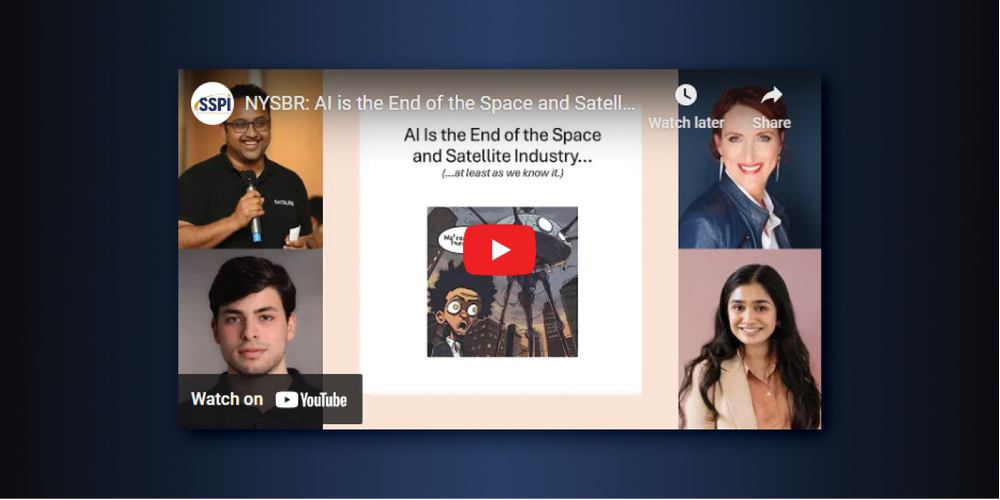Digital Space
Space is going digital at last.
An industry long restricted to an insignificant slice of telecom spending has begun a journey toward a much bigger role in connecting and comprehending the planet we share. The digital capacity of space keeps growing with new satellites, on-orbit servicing and debris removal spacecraft. The new generations of satellite being launched into GEO, MEO and LEO are increasingly commanded by onboard software that interacts with AI-enabled software on the ground. They steer their electronically-generated beams wherever needed, adapting minute by minute to demand.
Businesses have been funded to put data storage systems in orbit and on the Moon. And ground technology is beginning a revolution to replace analog systems with end-to-end digital, creating the possibility of seamless interconnection with the world’s telecommunications networks. MORE
Digital Space is underwritten by
Podcast
Bits, Bytes and AI, Oh My! – Episode 5 – Satellite Data in Real Time

Carla Filotico has 20 years of experience in management and strategy consulting. In her current role, she leads Novaspace strategy practice. She has extensive knowledge of the space sector, its ecosystem and applications/domains and more generally of the issues related to the space industry along the entire value chain from R&D, to manufacturing, launch, operations and to downstream applications. Ms. Filotico has been supporting space public institutions on space and industrial policy, market development and entrepreneurship fostering, as well as key global and European industry players to grow their business and shape their investment strategies. She is an active member of the European Innovation Council (EIC) Accelerator Jury.
This podcast series is sponsored by
More Bits, Bytes and AI, Oh My! podcasts →
Videos
The Better Satellite World campaign shows the world why our industry, though often invisible, is indispensable to modern life, through powerful stories and videos that depict space and satellite technologies contributing to the economy, society and sustainability of planet Earth. Some of our Better Satellite World videos focus on how digital space and satellite technologies are shaping everything from economics to modern warfare. Many of our recent New York Space Business Roundtable conversations have also covered topics from AI to the Cislunar economy and more.
Coming Up Next
Thank you for joining us for Digital Space!
In the News
SSPI Launches Digital Space, a Multi-week Online Exploration of the Ground-breaking Developments in the Future of Space – September 3, 2024
Hughes and Boost Mobile Demonstrate Automated, Multi-Transport Network Management for Resiliency at the Tactical Edge – Hughes – August 27, 2024
Neuron Releases AI-Powered Multi-Orbit Satellite Capacity Orchestration Solution – Via Satellite – August 27, 2024
AI and Cybersecurity: A Unified Strategy in Protecting Businesses – Hughes – August 23, 2024
Can AI detect anomalies in orbital astrodynamics? Managing a complex challenge – SpaceNews – August 21, 2024
AI transforming satellite imaging industry ‘but it’s not magic’ – SpaceNews – June 12, 2024
From Orbit to Ground: What’s next? – SpaceNews – May 23, 2024
SSI: Cislunar Space Safety – The Aerospace Corporation
Hardware to Software: The Ground Segment Evolution – Satellite Markets & Research – February 1, 2024
How Ground-Segment-as-a-Service supports next-generation satellite communication – Viasat – January 24, 2024










